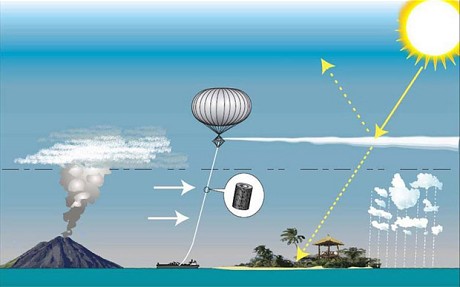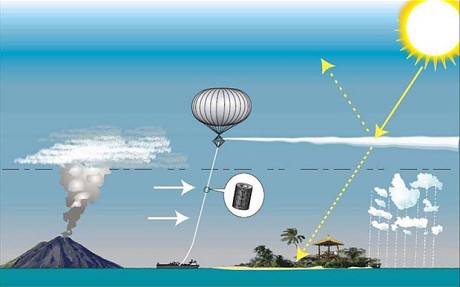
If the world is getting hotter because it's absorbing too much sunlight, why not put up a sunshade? That's the question Montgomery Burns has often asked, and one that scientists in the UK will begin to answer this October when they will use a weather balloon to loft a hose a little more than half a mile into the sky. They'll then pump water up the hose into the atmosphere. If that sounds simplistic to you, maybe you just don’t understand science.
The idea is that this is the prototype version of a system that could someday loft 11 million tons of sulfide particles into the upper atmosphere every year, which scientists project would cool the planet by 3.6°F in a few years' time.
If you're opposed to the very idea of messing with the earth's climate but you have yet to take Rush Limbaugh's advice on that issue, the good news is that some engineers think that this scheme will never work. Not because sulfide particles in the atmosphere won't cool the planet by reflecting sunlight back into space, mind you. We already know that will work, because we're doing it every day, only not on purpose.
Rather, these engineers say that it's unrealistic to imagine that we'll get big enough balloons to hold up strong enough hoses more than 12 miles up in the atmosphere, which is what this scheme will require.
"How do you make a flexible pipe that can carry 6,000 bar of pressure that sways in the wind of the jet stream and guarantee that it will last?" asks Justin McClellan, an engineer with Aurora Flight Sciences, which builds advanced aerospace vehicles for scientific and military applications. "A typical oil and gas rig might see 2,000 bar of pressure, and that is with a roughly quarter-inch-thick steel pipe. Solving the one-kilometer problem is probably not very hard, but when you add up all the requirements for a 20-kilometer pipe, this starts to look pretty unrealistic."
David Keith, professor of applied physics at Harvard University, thinks it's more likely that planes could work for lofting enough particles into the upper atmosphere. However it turns out, I'm sure we won't mind that the price of our failure to reduce our emissions will be Bladerunner-style skies turned a permanent shade of sickly orange.




